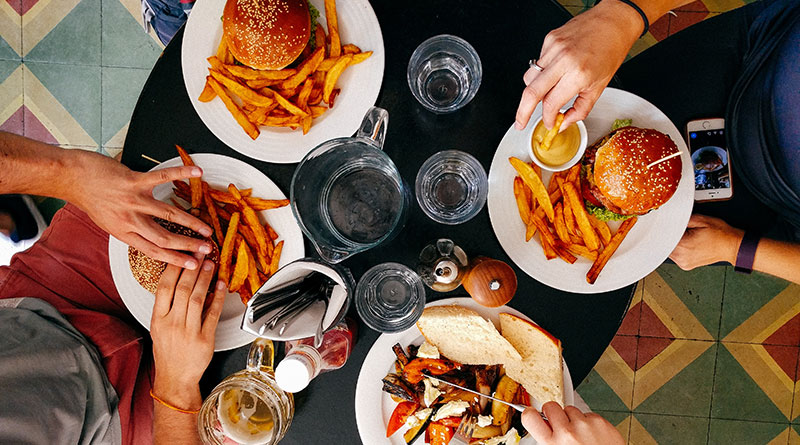Spending On Restaurants Slows In April But Consumer Confidence In Finances Reaches 28-Month High

Consumer card spending slowed to 1.6 per cent growth in April, down from 1.9 per cent in both March and February, and below the latest CPIH* inflation rate of 3.8 per cent. While consumer confidence in household finances rose to its highest level in over three years, a slowdown in food price inflation and cutbacks on food and drink led to a decline for restaurants and the smallest uplift in supermarket spending since June 2022. Meanwhile, cold and wet weather dampened retail sales, but Easter and summer holiday bookings boosted pubs, entertainment and international travel.
Brits cut back on spending on eating and drinking out in April, with restaurants once again experiencing a downturn, falling further into decline at -13 .1 per cent (in comparison to -12.6 per cent last month). Meanwhile, growth in spending on takeaways and fast food remained flat, at 3.0 per cent.
This comes as half (49 per cent) of Brits say they are concerned about how much they spend on food and drink, with the same proportion making the effort to cut back on discretionary spending (49 per cent). Of this group, the majority are spending less on dining out and ordering takeaways, both at 54 per cent respectively. One in four (24 per cent) say they are cutting back on coffee or drink subscriptions.
In an effort to control spending, 58 per cent of Brits have openly discussed aspects of their finances with loved ones – otherwise known as ‘loud budgeting’ – with consumers most often talking about their goal to cut back on takeaways (29 per cent) and restaurants (25 per cent).
Despite the overall slowdown in spending growth, Brits’ confidence in their ability to manage their household finances reached its highest level since November 2021, at 71 per cent. Consumers’ confidence in their ability to live within their means also improved, increasing by two percentage points month-on-month to 74 per cent. Confidence in their ability to spend more on non-essential items reached 56 per cent, up from 55 per cent in March.
Spending on entertainment grew 3.2 per cent last month, on par with March’s growth (3.1 per cent), as families spent on leisure during the half-term break.
This rise in entertainment spending comes as 56 per cent of Brits say they have noticed that tickets for events, attractions and museums have increased in price over the past year, with a similar proportion (57 per cent) saying they are concerned about this trend.
A quarter (25 per cent) of Brits said that if an attraction had ‘dynamic pricing’ in place – where ticket prices change in response to factors such as weather and demand – they would only visit at off-peak times. A similar proportion (23 per cent) would seek out free alternative attractions, such as parks or certain museums, if dynamic pricing is in place.
Travel agents had another positive month, once again rising 7.1 per cent, as holidaymakers booked summer getaways. However, hotels, resorts and accommodation saw their first decline (-0.7 per cent) since May 2023. A third (32 per cent) of consumers say they’re prioritising holidays abroad over staycations this year, with almost two fifths (39 per cent) of this group hoping to escape the wet and cold weather in search of some sunshine.
Karen Johnson, Head of Retail at Barclays, said: “Retailers were hopeful that discretionary spending would bounce back by mid-year, buoyed by falling inflation and the prospect of better weather. While improving consumer confidence offers a ray of hope for the retail and hospitality industries as the summer season approaches, many retailers have adjusted their expectations, anticipating no real recovery until the autumn.”
Jack Meaning, Chief UK Economist at Barclays, said: “With inflation expected to have dropped back to 2 per cent in April, and with many anticipating a boost from the National Living Wage increase, it is encouraging to see consumer confidence picking up. Given the long squeeze consumers have faced, it may take time for this to translate into stronger discretionary expenditure, but easing interest rates in the second half of this year should spur consumers’ confidence and spending.”
